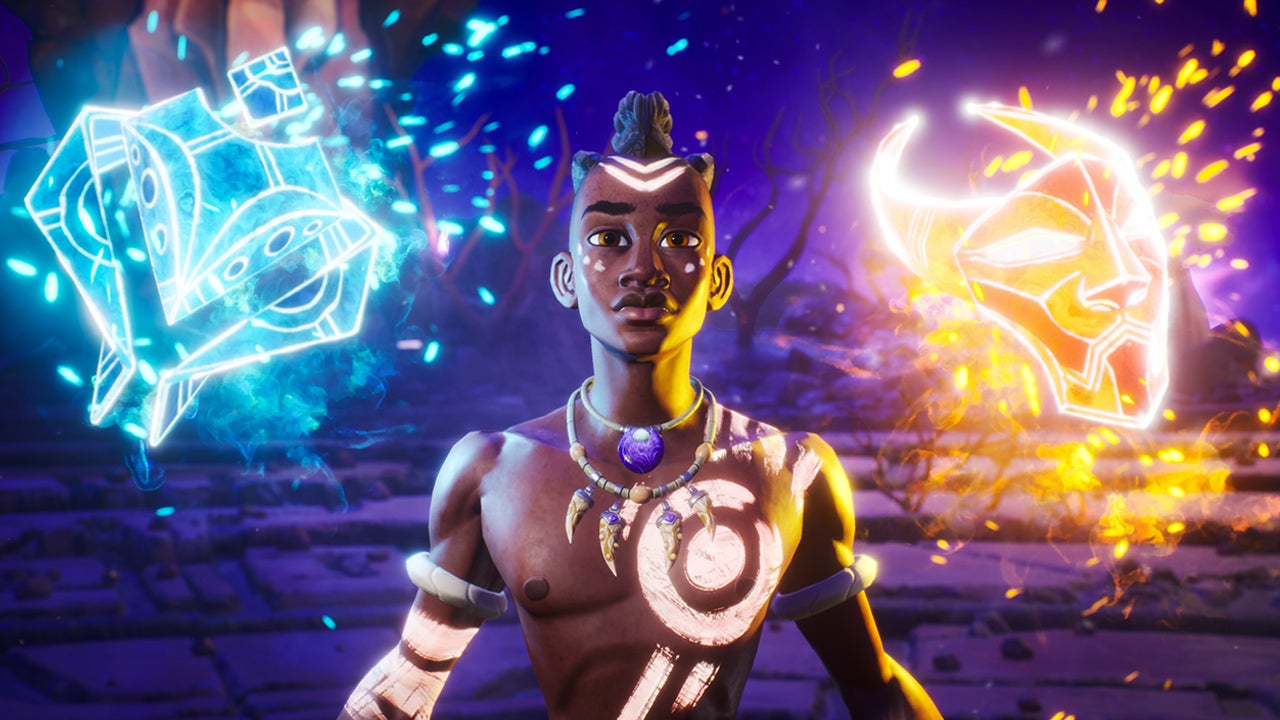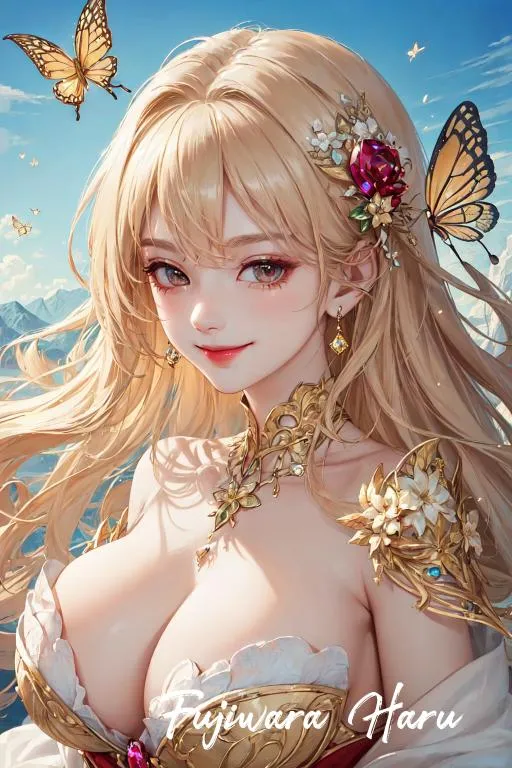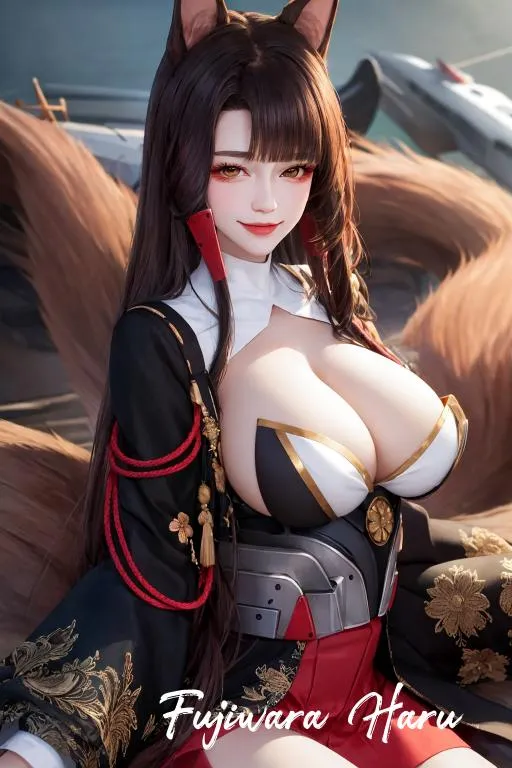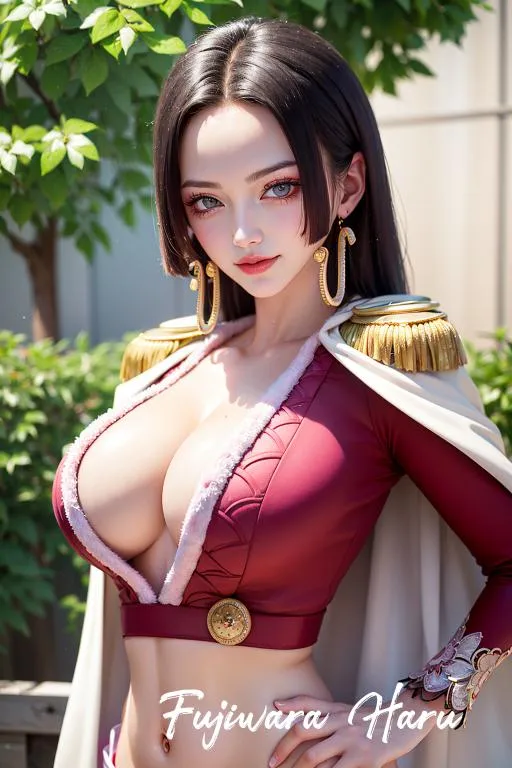The age of streaming has been explosive, upending the way we watch television and creating a tumultuous landscape. From the boom in programming to the massive layoffs and corporate shake ups all the way to the recent WGA and SAG-AFTRA strikes that have shut down the entertainment industry as workers fight for better residuals and payment from the studios, the impact of streaming both good and bad cannot be denied (even with one of those strikes being very recently resolved). The explosion in streaming platforms and viewership has led to an immense and seemingly never-ending need for programming, which has had an unexpected silver lining. We're living in a golden age of animation that has given us eclectic and incredible cartoons on almost every streaming service, many of which buck the traditional understanding or expectation of what animation can be.
As part of our State of Streaming series, IGN chatted with some of the people behind the biggest animated shows right now to explore how streaming has impacted the industry and how our new way of watching TV has played a massive part in the current animation boom.
Jump to:
- The Huge Impact of Anime on Adult Animation Audiences
- Breaking Through Outdated Perceptions About Animation
- Reaching a Wider Audience Than Ever Before
- The Freedom to Get Wild and (Very, Very Violent)
- Embracing Weird Women and Making Animation in Covid-19
- A Shift Towards Serialized Storytelling
- The Fight for a Better Animation Industry
The Huge Impact of Anime on Adult Animation Audiences
In North America, cartoons have long been seen as a space solely inhabited by children's programming. It's an outdated view that harks back to an age of cartoons as toy commercials rather than the reality of animation as a storied and eclectic form that has both a rich history and huge impact on entertainment around the world. One of the biggest cultural shifts that streaming has enabled is the access that viewers have to animation from around the world, including making it far easier for audiences to watch anime both old and new. "For years and years in Japan, anime has been a thing that is for all ages and all genres," Vox Machina's Sam Riegel explains. "Anime is not a genre in and of itself. There's genres within anime. There's some for kids, there's some for teens, there's some for grownups."
The impact of anime and Japan's eclectic approach to animation for all ages is something that Riegel and others in the industry think has primed audiences to open their minds. "Now with all the different ways of consuming animation it's much easier for people to see that it doesn't just have to be one thing or for one audience group," Riegel said. "We're starting to see in the last few years people realizing that, 'Yeah, it's not all for kids.' There's different genres of animation even within similar styles and it's exciting to be part of that."
That's something that Robert Kirkman, the creator of Amazon's brutally violent and inventive superhero show Invincible — based on his comics with artists Cory Walker and Ryan Ottley — agrees with. "I think that Invincible is succeeding to the level that it is because anime has been proving that [animation] is adult fare and that it's something they can enjoy."
Breaking Through Outdated Perceptions About Animation
Of course, with all of that said, North America has its own tradition of adult-focused animation from The Simpsons to South Park to Family Guy all the way to Adult Swim's smash hit Rick and Morty. Executive producer Steven Levy also sees anime as part of the reason that wider audiences are embracing adult animation, and shared an anecdote from the early days of the show. "When Dan Harmon and I were developing more animation based off the success of Rick and Morty, the big drum we were beating was that animation is not just playing Looney Tunes before a movie in a theater to entertain kids. It's a way of telling all sorts of stories."
After banging that drum for six seasons — and about to go into the seventh — Levy feels like a corner has been turned. "For whatever reason, I think we're finally feeling like it's breaking through those barriers."
Even with a bigger audience, there's still a feeling that animation is pushing through the misconceptions of the wider audience and the idea that it's a lesser form of entertainment. "It's sad, but I do think that animation is undervalued by a lot of people who won't give it a chance," Sydney Ryan, Supervising Producer of Solar Opposites, shared. "I have so many friends who say, 'Oh, I don't watch animated shows.' And it's upsetting because there are so many incredible animated shows out there that I know they'd love."
Ryan has a theory on how to change that and it's a really simple one. "I think people should just watch an episode of a new animated show, go outside of what they're used to, and they could really open a whole new world of programs to enjoy."
Reaching a Wider Audience Than Ever Before
So along with accessibility, what is it about streaming that works so well for animation? For Ryan, Solar Opposites living on a platform like Hulu feels like a better fit, in a large part because of just how much audiences enjoy the binge-model. "The streaming model seems to just work better for our show. Even my parents said that they love that the show drops all at once because it's so bingeable and it's more enjoyable to not have to wait for each episode."
It's not just shows that are made exclusively for streaming that find their audience on the platform either. Simon Chong is the Supervising Director of Bob's Burgers, which airs on Fox before going to Hulu domestically and Disney+ in other markets. He told IGN that streaming can introduce entirely new audiences to an established show, not just in the US but around the world. "I'm from the UK, and for the longest time Bob's wasn't readily available on a streaming service outside of America," he said. "With Hulu in the USA and Disney+ globally, we're now reaching a much larger audience and people are discovering us every day. And having that large catalog of episodes already baked in, people have so much ready to go and really invest their time into it."
Futurama EP Claudia Katz has been working on the beloved animated series since the first season hit Fox networks in 1999, and through two revivals — first to cable and then to streaming — the most recent of which saw the show land on Hulu. She feels that streaming offers up a freedom that broadcast doesn't. "Linear television can be limiting in episodic length and content," Katz said. "The move to streaming allows for a broader range of content for a wider range of audiences."
The Freedom to Get Wild and (Very, Very Violent)
That wider scope has opened the doors for even more experimental and extreme adult animation. The existential Hollywood satire of Bojack Horseman or the gorgeously groundbreaking Arcane feel like they're unlikely to exist anywhere other than the streaming platforms where they hailed from, where budget and content boundaries are a far cry from traditional linear television. When it comes to bringing shows like the brilliantly bloody Vox Machina to life, their creators feel the same way. "Amazon was right there with us from day one," Riegel explained.. "One of the first meetings we had was all of them sitting in a room with us and saying, 'This is not for kids, right?' And we said, 'No, it's not.' And they were like, 'Good because we don't want to make a kid's show. We want you to go balls to the wall.'"
The critically acclaimed Prime Video adaptation of the beloved tabletop gaming series Critical Role had an unusual start in life after being rejected by many streamers and traditional studios — including Amazon. The crew of voice actors who starred in and made the show launched a Kickstarter hoping to raise $750,000 to make an animated special. When that campaign raised over $11 million, suddenly everything changed.
"After that it was a different story. It was much easier to pitch. There was a lot more interest and I think it also just showed that we have an audience that really knows what they want," CEO and star of Critical Role and Vox Machina, Travis Willingham who voices the goliath barbarian, Grog Strongjaw shared. Why was animation the dream format for expanding on the lore of Critical Role? "I think this is one of the places where we can begin to tell these stories in the most effective way possible."
For Vox Machina, that meant being able to explore the gore, sex, and drinking that had always been a part of what made the show so popular. "Critical Role is definitely for adults," Riegel said. "We wanted to make sure that that was maintained for the animated series. We didn't want to dumb it down or, you know, never show blood so kids can watch."
A year before Vox Machina debuted, Prime Video released its uber violent superhero series Invincible that pushed the boundaries of what audiences had come to expect from animation, and utilized the biases that people had about the expected audiences for cartoons with a shocking pilot. "There's a reason why the first 40 minutes of the 48 minute first episode feels like it could have been a kid's cartoon" Kirkman revealed. "It was by design that I wanted people to be living in that bias and going, 'Oh, okay. I heard this was for adults, but it's...' and then, 'Oh, my God.'"
That opener also took a lesson that Kirkman learned from his days making comics and specifically The Walking Dead. That seminal zombie comic was well known for Kirkman's penchant of ending every issue with a cliffhanger, something he'd wanted to do with the live action show but ended up getting a lot of pushback. "I ended every single issue with a cliffhanger because in comics you have a month gap between and you need people to remember the big moment and you want people to have a sense of needing to get to the next issue. So on The Walking Dead [TV show] I wanted to end with that cliffhanger so that it made people want to keep watching. And people were like, 'You can't sustain that, you can't do that.'"
In the numbers-obsessed world of streaming, though, that mindset became a necessity. "When multiple episodes are available, everything is data driven. So I knew going into Invincible Season One that if a certain number of people didn't immediately watch Episode Two after watching Episode One, that's bad for us. And it may, depending on the way the numbers fall, it may trigger instant cancellation. So just going into writing the pilot for Invincible, I was like, 'Okay, so how do I end the first episode in a way that makes people absolutely have to watch the second episode?'" The answer was a historically brutal bloodbath that hooked viewers and likely wouldn't have been able to exist on linear TV in all its bloody glory.
Solar Opposites is another show that veers into the violent and strange, and Ryan is sure that streaming has allowed the show to do stuff it never would have been able to do otherwise. "I definitely think that Solar has more freedom because it's a streaming show," she explained. "We leaned into the fact that we were able to be TV-MA on streaming because we got away with a lot that we never could've done on primetime television."
She continued. "The writers have been able to explore whatever storylines they could dream of because we're a streaming show and I think the audience has really responded to that. We get to push the jokes and the storytelling in ways traditional television would have called too niche."
Embracing Weird Women and Making Animation in Covid-19
Even with the boom in animated series and the hunger for new programming, it's far from easy to get a show made. Just like Rick and Morty, the darkly humorous adult animation series Teenage Euthanasia — which tells the supernatural story of a female-run funeral home and the women who live within it — runs on the legendary Adult Swim block and also streams on Max. But it took years to actually bring it to life. "We like to call ourselves the Florida cockroach, they can't kill us no matter what," co-creator Alyson Levy laughed. "We just hit a bunch of lucky and unlucky breaks. Mostly, you know, it took us a really long and slow time through development."
Although they're quick to mention that Adult Swim was always "really positive" about Teenage Euthenasia, Alissa Nutting and co-creator Levy came up against what they called "a hurdle of imagination," as Nutting explained. "We have a lot of women characters who have dialogue and they actually talk to each other. So we really did have to prove that, just because it was about women characters, not every episode would be about, you know, going to the mall."
Like many of the shows currently on air, much of Teenage Euthanasia was made during the onset of the COVID-19. "We weren't getting to do anything in person at all; it all had to be remote. At the same time that it was a challenge, it was also a great privilege," Nutting said. "I think that's kind of how the past several years have been for a lot of people. You have really big challenges that also sometimes bring these unprecedented opportunities."
Solar Opposites also came to life in the early days of the pandemic. Ryan believes part of the reason so many animated shows were produced during that time is because it was the rare kind of TV that was still able to be made. "Solar didn't miss a single deadline after we all started working from home in the middle of Seasons One and Two."
A Shift Towards Serialized Storytelling
Originally made for Fox before being picked up for Hulu, Solar Opposites' move to streaming afforded Ryan and her team with a chance to change the way they approached the show. "We were able to increase the amount of serialized storytelling because we knew the audience would have access to all the episodes at once. It was the streaming boom that allowed us to make the show that we wanted"
In Steve Levy's eyes, that move towards serialized storytelling is one of the biggest shifts of the streaming era. "That's the way they keep you hooked when they drop everything at once!" Levy exclaimed. "I did it with Stranger Things and I got addicted, and watched it all the way to four in the morning. Then that became the streaming norm and also the fandom style of television watching."
That change was keenly felt by the people who make Rick and Morty, especially as show creator Dan Harmon came from what Levy describes as "a background of modularity." That essentially means that Rick and Morty was originally designed more as a show that people could just jump in and out of easily, like The Simpsons and other series that rely mostly on one-off stories.. "No matter what season, what episode, even if you had never seen anything before in that world, you totally got it," Levy says of the shows that influenced Harmon. "You understood their relationships. You understood the stakes of the episode. And, you know, you didn't need to have seen any of the episodes prior."
As the fandom for Rick and Morty grew and streaming became one of the main ways that fans were discovering the show, the series had to adapt. "The fandom got so intense and they needed to know more backstory, they needed to dig into these characters more. So if you were just giving them a one off episode that's silly with these characters and it doesn't push the overarching story, they got mad."
But it gave them the chance to do something that they'd always been hoping to do. "We wanted to dive more into the backstories. But the show was always designed to be modular, lightweight, light serialized elements. Just as a treat for the fans who really were diehard fans of our show who were following from day one, there's a larger story. But I think based on the way TV went and everything needing to be serialized, there was more of an onus — especially within the writers rooms — to do one or two serialized episodes that kind of push the overarching story about who Rick is. What's his backstory? What's his relationship to these people that he's choosing to hang out with? Then there's stuff like the Eyepatch Morty that the fans are calling Evil Morty. How do we explore that character more?"
The Fight for a Better Animation Industry
Though streaming has created a space for more great animation, there have also been mass layoffs in the industry, along with unexpected and often last-minute cancellations. This includes gorgeous and vital shows like Craig of the Creek and Tuca & Bertie. Both of those shows broke ground when it came to bringing different perspectives and voices into the animation space. And when they were canceled, the creators who brought those insights to those fan-favorite series — many of whom often have a harder time getting into the animation industry — were impacted most. It's a disappointing reality of the industry, especially in a time when you can spend years working on a show only to have it removed or in the worst case scenario, never released.
Warner Bros. sparked that trend by removing critically acclaimed series like Infinity Train, Close Enough, and Aquaman: King of Atlantis from their Max streamer. The move inspired a grim trend of studios removing content allegedly to cut costs and to earn money from licensing or selling the shows elsewhere. When Disney followed suit they removed the Danny Devito and Aubrey Plaza FXX animated series Little Demon from Hulu and now viewers can only access that critically acclaimed series by paying $1.99 per episode on services like Apple TV and Vudu.
Animation workers have long been working to fight for better deals and fair treatment, though, with a focus on the importance of unionization. The statement that Tuca and Bertie creator Lisa Hanawalt posted on Twitter when the show was canceled highlighted the importance of unionization in the animation industry. "I'm also very glad we were able to be covered by both the Animation Guild and the Writers Guild of America. I hope any show creators who have the leverage to fight for unionizing their productions will continue to do so."
That's one of the unique challenges of animation as workers have to organize to have their productions covered by The Animation Guild (TAG) and potentially the WGA. But 2023 has seen a growing solidarity within the industry which is widening the net on who's included in unionized animation spaces even at the biggest studios. In July, the production workers at Warner Bros. and Cartoon Network voted to unionize and are now covered by TAG.
The past couple of years have also seen a big push to get more equitable pay for writers on animated shows. As reported by our own Amelia Emberwing back in 2021, "animation writers sometimes earn less than a third of what live-action writers do despite performing the same job — $9,099 per freelance animated script (for a half-hour series) as opposed to the $12,290 - $27,100 live-action writers make for the same length script."
Another issue that animation writers face in 2023 is one that's shared with the rest of the television industry and honestly the wider world: the eagerness for gig workers rather than full time ones. In both animation and live-action, full-time staff writer positions are disappearing and writers are instead being hired as freelancers. That isn't just impacting the amount of roles available but also how much people get paid. In recent numbers released by members of The Animation Guild on Instagram, it was revealed that freelance animation writers are earning just half of what they could have been earning as full-time staffed writers annually. According to the TAG Writers account, a staff writer on an animation series could earn $121,971.20 a year, but a freelance writer who creates the same amount of scripts would earn between $60-65,000.
Then there's the fact that freelance animation writers end up doing more unpaid work than if they were staffed. That's led to a burgeoning movement called "Freelance Not Free Work" that aims to remind writers that the union minimums are actually just that and can be negotiated. It also encourages creators to charge for the prep work that goes into writing an animated show.
There's also a sense, at least for Teenage Euthanasia's Alyson Levy, that in 2023 the streaming landscape is making TV more creatively myopic. That's manifesting in a growing fear of the weird and out there ideas that have made her career and many others in the entertainment industry possible. "I feel like it's really shifting now. I'm a basic cable person. I came in, we made a show called Wonder Showzen for MTV2. What that basic cable space did for a lot of weirdos is just gave them enough money to make their projects. There were a lot of different networks at various points that took the lead in that and I'm not sure where that is coming from now. That feels very concerning to me."
She continued. "When young people talk to me about trying to make a TV show and their idea isn't the absolute most mainstream thing ever, I feel very confused about where they go. I know there'll always be weird and unique people that will make amazing things, but who's gonna pay for those things right now? Even the small amount they would need to pay, I'm not sure."
With the WGA making historical gains and solidarity between workers in the entertainment industry higher than ever, there is currently a move towards making the industry more equitable. New streaming residual rules could make animation more sustainable — especially for the writers who make massive shows that we've talked about here — and set a precedent for future TAG negotiations. There's a push to get different kinds of people working behind the scenes on these series and creators like Riegel and Willingham feel like that's a great way to make the industry more accessible, opening the doors that can sometimes be hard to knock down. "We've made great efforts to try to get new people into animation, new writers into animation with our shows," Riegel says. "We've actually been able to have been really fortunate to bring some of the fan artists from Critical Role, people who we discovered who were just drawing cool fan art Twitter. And we've actually managed to rope them into our show and gotten them jobs!"
To truly celebrate the incredible era of animation we're in, it's important to look at it from all angles and in 2023 that means exploring the struggles as well as the triumphs. But in all of that one thing is clear, with all the incredible series on our screens there's rarely been a better time to be a fan of animation.
Rosie Knight is a contributing freelancer for IGN covering everything from anime to comic books to kaiju to kids movies to horror flicks. She has over half a decade of experience in entertainment journalism with bylines at Nerdist, Den of Geek, Polygon, and more.





